McKenna Ink Thesis Editing Service
To add your comments, click here.

In Canada, Thanksgiving is celebrated on the second Monday in October. And though it shares the name Thanksgiving with the American holiday, the origin and history of Canada's Thanksgiving holiday is quite different from Thanksgiving in the USA.
Where the American tradition is about remembering the Pilgrims and settling the New World, Canadians merely give thanks for a successful harvest.
Canadian Thanksgiving is celebrated in October since Canada's geographical location is further north than the US and therefore, the harvest season arrives earlier in the year. American Thanksgiving occurs approximately six weeks later on the fourth Thursday of each November.
So what are the differences between Canadian and American Thanksgiving, other than the date? Not much! Both Canadians and Americans celebrate Thanksgiving with parades, family gatherings, pumpkin pie and a whole lot of turkey! – NealboThe origins of the first Thanksgiving in Canada date back to an explorer, Martin Frobisher, who had been trying to find a northern passage to the Pacific Ocean. Frobisher's Thanksgiving celebration was not for harvest, but for homecoming. He had safely returned from an unsuccessful search for the Northwest Passage, avoiding the later fate of Henry Hudson and Sir John Franklin.
In the year 1578, Frobisher held a formal ceremony in Newfoundland to give thanks for surviving the long journey. Years later, the tradition of a feast would continue as more settlers began to arrive in the Canadian colonies.
Canadian Thanksgiving can also be traced to the French settlers who came to New France with explorer Samuel de Champlain in the early 17th century, who also took to celebrating their successful harvests. The French settlers in the area typically had feasts at the end of the harvest season and continued throughout the winter. Their feasts often included sharing their food with the indigenous peoples of the area. In 1606, Champlain proposed for the creation of the Order of Good Cheer.
As many more settlers arrived in Canada, more celebrations of good harvest became common. New immigrants into the country, such as the Irish, Scottish and Germans, would also add their own traditions to the harvest celebrations. Most of the U.S. aspects of Thanksgiving (such as the turkey) were incorporated when United Empire Loyalists began to flee from the United States during the American Revolution and settled in Canada.
After the Seven Years' War ended in 1763 handing over of New France to the British, the citizens of Halifax held a special day of Thanksgiving. Thanksgiving days were observed beginning in 1799 but did not occur every year. After the American Revolution, American refugees who remained loyal to Great Britain moved from the newly independent United States and came to Canada. They brought the customs and practices of the American Thanksgiving to Canada.
Lower Canada and Upper Canada observed Thanksgiving on different dates; for example, in 1816 both celebrated Thanksgiving for the termination of the war between France and Great Britain, the former on 21 May and the latter on 18 June. In 1838, Lower Canada used Thanksgiving to celebrate the end of the Lower Canada Rebellion. Following the rebellions, the two Canadas were merged into a united Province of Canada, which observed Thanksgiving six times from 1850 to 1865.
The first Thanksgiving Day after Canadian Confederation was observed as a civic holiday on April 5, 1872 to celebrate the recovery of thePrince of Wales (later King Edward VII) from a serious illnesses.
Starting in 1879 Thanksgiving Day was observed every year, but the date was initially a Thursday in November. The date of celebration changed several times until, in 1957, it was officially declared to be the second Monday in October. The theme of the Thanksgiving holiday also changed each year to reflect an important event to be thankful for. In its early years, it was for an abundant harvest and occasionally for a special anniversary.
After World War I, an amendment to the Armistice Day Act established that Armistice Day and Thanksgiving would both be celebrated on the Monday of the week in which November 11 occurred, starting in 1921. Ten years later, in 1931, the two days became separate holidays, and Armistice Day was renamed Remembrance Day. From 1931 to 1957, the date was set by proclamation, generally falling on the second Monday in October, except for 1935, when it was moved due to a general election. Finally, in 1957, Canadian Thanksgiving was permanently set to be the second Monday in October.

Image Via Vila do Artesao
Text Via Wikipedia
A Fall Fair Confession
As a kid, living in northern Ontario of the early 1950s, the Fall Fair was big stuff. There were carnival rides, tent shows, talent shows and food - lots and lots of food. Although there was plenty for consumption, all the best stuff seemed to be "for show" only. These were the things made by local Moms and Grandmas to be judged as the region's finest.
The first one I actually remember was the 1953 Charlton Fall Fair. I was in first grade and the fair had been set up on the Savard School grounds. Inside, the classrooms had been transformed into showrooms and every variety of delicacy from green tomato chutney to vanilla fudge were spread across massive tables. Better yet, my classroom was full of bounty and nary a grown-up in sight.

I ask you, does the kid on the left look like a hardened felon?
I made a beeline straight for the cakes, cookies and candies display. It was a gloriously giddying sight. Enough sugar sat on those tables to put anyone into a hypoglycemic coma. And I must confess, at the time, I had a rather larcenous predisposition; I couldn't help myself from helping myself. And so I did. I grabbed two knuckle-fulls of somebody's meticulously arranged chocolate fudge and made my exit undetected.
Was the fudge good? It was abso-fucking-lutely fan-tabulous! And I'm here to tell ya, there really is something extra rewarding about ill-gotten gain - something that makes it seem all the sweeter and richer. Was there any retribution to pay? Nope! I ate it all behind the garbage bins at the back of the school and savoured every morsel of it. I didn't get a tummy ache. I didn't get found out by my parents and I didn't have to apologise to anyone.
Fortunately, this incident did not steer me into a life of escalating crime. I guess I had smarts enough to realise, I had gambled and won - this time - but maybe next time, I wouldn't be so lucky. So, that's why I remember the Fall Fair of 1953. It had nothing really to do with the fair and all its activities. Why I remember it is because I pulled off a "Mission Impossible" years before Tom Cruise was even born. – Nealbo
Fall Fairs are not to be Missed

Blue Rodeo immortalized them in the 1990 song “What Am I Doing Here,” singing: “I stand in front of this Ferris wheel…and all the drunks just stumble by.”
For most of us, fall fairs recall goat bleats, cattle smells, cotton candy, and guys with ponytails and big voices, working the midway games. Remember feeling like the impossible might happen? You could actually win that hula-hooping contest, enter the prize-winning carrot, or burst the balloon and strut around with an enormous stuffed animal on your shoulders.
A rite of passage, fall fairs mark the changing seasons just as they mark a transition into adulthood. The Province of Ontario boasts more than 230 annual fairs, many dating back to the 19th century. The Williamstown Fair in Southeastern Ontario - the longest-running annual fall fair in the country - celebrates its 200th anniversary this year.
Hot Diggity Dogs Flyball
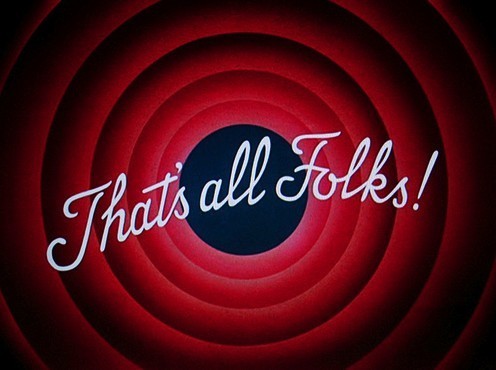
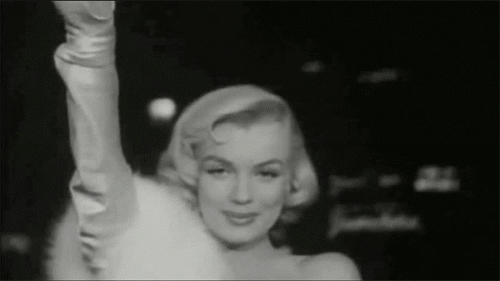

to be thankful for...
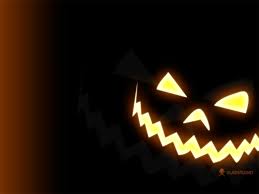

A rite of passage, fall fairs mark the changing seasons just as they mark a transition into adulthood. The Province of Ontario boasts more than 230 annual fairs, many dating back to the 19th century. The Williamstown Fair in Southeastern Ontario - the longest-running annual fall fair in the country - celebrates its 200th anniversary this year.
Fall fairs offer a cornucopia of harvest competitions for all ages and aptitudes, whether you’re a skilled vegetable sculptor, an intrepid cow milker, or just lucky enough to resemble the family pet. So when lying lakeside loses its appeal this fall, it’s time to swap your Tilley for a Stetson and check out a few of the more unusual events.
Then you can decide for yourself if the guys from the song really are stumbling drunk or if they just got off the Zipper.
Straw Bale Turkey Competition
Lyndhurst Turkey Fair, Lyndhurst, Ont., Sept. 17, 2011
Every year, organizers distribute up to 20 two-metre-tall round bales throughout this tiny community, where local competitors transform them into oversized turkeys, complete with beaks, wattles, tail feathers, and dryer-hose gullets. The oldest competitor is Vera McElroy, a centenarian, who still faithfully dresses her hen in a babushka each fall.Rooster Crowing Contest
Bobcaygeon Fall Fair, Bobcaygeon, Ont., Sept. 29 to Oct. 1, 2011
Really, there’s only one rule to competitive rooster crowing: “It’s people who do it. Not roosters. People only,” says fair secretary-treasurer Margot Brown. Held as part of the annual talent contest, this event usually attracts between 10 and 15 competitors and is arbitrated by three local judges. Best part: It doesn’t require an ounce of experience. According to Brown, “Some of them really sound like roosters.”Hot Diggity Dogs Flyball
Norwood Fall Fair, Norwood, Ont., Oct. 8 to 10, 2011
Flyball involves a racecourse with four jumps, a box that shoots a tennis ball when pounced on, and two teams of four dogs—anything from chihuahuas to greyhounds—running in a head-to-head relay. The competitors can be full of surprises, occasionally abandoning the course in favour of someone’s french fries. “Of course, the crowd loves it,” says flyball club president Natalie Cornell, “but we’re mortified.”
Pumpkin Chuckin'
Kemble Harvest Blowout, Kemble, Ont., October 22, 2011
Trebuchets, catapults, and air cannons standing more than six metres tall propel pumpkins up to 600 metres at this annual fundraiser for the local sports arena. Recent attention from the World Championship Punkin Chunkin Association in Delaware raised the competition’s profile, but one hopeful US competitor and his launcher were turned back at the border. “Whether they thought it was a weapon of mass destruction, I don’t know,” says last year’s pumpkin- firing marshal David White.Article Via Cottage Life
To add your comments, click on
links to this post
here or below . It will take you to a stand-alone copy of this page. There, you will find the comments box, so feel free to let 'er rip.


Spoooky Reading
What lies beneath...
One more thing
for Canadians
to be thankful for...

Ryan Kesler, Vancouver Canucks
Only 21 days until Hallowe’en!
The scariest face in South Africa!


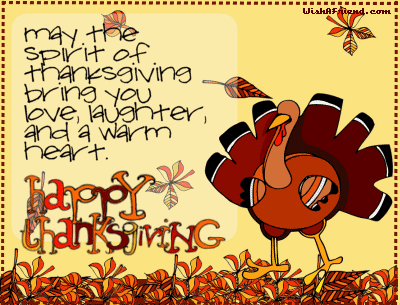

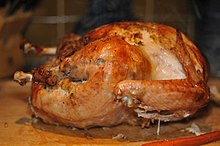


No comments:
Post a Comment